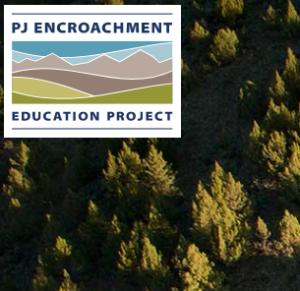Research and Publications
View article.
Forest biological disturbance agents (BDAs) are insects, pathogens, and parasitic plants that affect tree decline, mortality, and forest ecosystems processes. BDAs are commonly thought to increase the likelihood and severity of fire by converting live standing trees to more flammable, dead and downed fuel. However, recent research indicates that BDAs do not necessarily increase, and can reduce, the likelihood or severity of fire. This has led to confusion regarding the role of BDAs in influencing fuels and fire in fire-prone western United States forests. Here, we review the existing literature on BDAs and their effects on fuels and fire in the western US and develop a conceptual framework to better understand the complex relationships between BDAs, fuels and fire. We ask: 1) What are the major BDA groups in western US forests that affect fuels? and 2) How do BDA-affected fuels influence fire risk and outcomes? The conceptual framework is rooted in the spatiotemporal aspects of BDA life histories, which drive forest impacts, fuel characteristics and if ignited, fire outcomes. Life histories vary among BDAs from episodic, landscape-scale outbreaks (bark beetles, defoliators), to chronic, localized disturbance effects (dwarf mistletoes, root rots). Generally, BDAs convert aboveground live biomass to dead biomass, decreasing canopy fuels and increasing surface fuels. However, the rate of conversion varies with time-since-event and among BDAs and forest types, resulting in a wide range of effects on the amount of dead fuels at any given time and place, which interacts with the structure and composition of the stand before and subsequent to BDA events. A major influence on fuels may be that BDAs have emerged as dominant agents of forest heterogeneity creation. Because BDAs play complex roles in fuels and fire heterogeneity across the western US which are further complicated by interactions with climate change, drought, and forest management (fire suppression), their impacts on fuels, fire and ecological consequences cannot be categorized simply as positive or negative but need to be evaluated within the context of BDA life histories and ecosystem dynamics.
View article.
Soil temperature extremes are not uncommon when woody fuels are ignited in prescribed burns or wildfires. Whether this leads to substantial loss of soil organic matter or microbial life is unclear. We created a soil heat gradient by burning four levels of masticated woody fuels (0, 34, 101, and 169 Mg ha−1) to determine if heat thresholds produce abrupt changes in soil C, N, microbial biomass, or fungal hyphae. Twenty-four burns were conducted with masticated fuels overlaying a clay loam soil equilibrated at either 4 or 25% volumetric soil water content. Maximum temperatures ranged from 40 to 450 °C depending on fuel load and soil moisture content, with heat duration (>60 °C) as great as 22 h. Moist soil quenched temperatures two- to threefold compared with dry soil at comparable fuel loads. A slight, gradual decline in total C and N was found with increasing temperature and heat duration, reaching a maximum loss of 14–18% of the total at the highest heat load. Available NH4 increased linearly starting at 150–175 °C and reached a maximum 15-fold increase relative to unburned soil by 450 °C. Nitrification (30 d post-fire) was low regardless of treatment and was essentially eliminated at the highest temperatures. Microbial biomass declined curvilinearly with increased heating, approaching 65% loss compared with unburned soil, and was most rapid in moist soil once temperatures exceeded 60–70 °C. Ultimately, we found no evidence of abrupt heat thresholds for these common soil properties. Instead, property changes followed a slightly declining trajectory (soil C, N, NO3, fungal hyphae) or a steady incremental increase (NH4) or decrease (microbial biomass).
View article.
We found that many community members were initially drawn to learn about wildfre risk mitigation, but their informational needs shifted toward broader forest ecology over time, suggesting that communication strategies and topics must also evolve over time. Some common terms used by land management professionals were unclear to public audiences, sometimes leading to feelings of dissatisfaction with outreach. One-on-one meetings and experiential group learning were perceived by information providers and community members to be useful strategies for outreach. Our fndings can be used to improve ongoing outreach in this study area and inform similar efforts elsewhere.
View brief.
Past practices, such as fire suppression, have created densely packed forests with an overabundance of woody vegetation. Live or dead, this vegetation can fuel severe wildfire. Overcrowded growing conditions also prevent trees and other plants from obtaining sufficient nutrients, light, or water to bounce back and remain healthy following a stressful event. The warming climate further stresses vegetation and can foster tinderbox conditions on the landscape, especially under widespread persistent drought.
View article.
Smoke characteristics improved predictions of fire severity in non-reburn areas but not in reburns. Maximum daily smoke cover interacted with elevation, showing a strong dampening effect of high smoke cover on fire severity at low elevations consistent with prior work and a weaker amplifying effect on fire severity at middle elevations with low smoke cover.
View brief.
The Wildfire Crisis Strategy calls for ramping up forest treatments on Federal, State, Tribal, and private lands well above current levels. Public and stakeholder engagement, consultation, and collaboration are critical to successful implementation of the strategy. Best available science can inform how to improve the way we engage with communities and help us collectively determine the right treatment locations and tools.
Access book.
This open access book synthesizes current information on wildland fire smoke in the United States, providing a scientific foundation for addressing the production of smoke from wildland fires. This will be increasingly critical as smoke exposure and degraded air quality are expected to increase in extent and severity in a warmer climate. Accurate smoke information is a foundation for helping individuals and communities to effectively mitigate potential smoke impacts from wildfires and prescribed fires. The book documents our current understanding of smoke science for (1) primary physical, chemical, and biological issues related to wildfire and prescribed fire, (2) key social issues, including human health and economic impacts, and (3) current and anticipated management and regulatory issues. Each chapter provides a summary of priorities for future research that provide a roadmap for developing scientific information that can improve smoke and fire management over the next decade.
View article.
Field surveys revealed that bare-soil exposure decreased >20% over the 14 years owing to biomass accumulation, but this was primarily due to large increases in exotic annual “cheatgrass” (Bromus tectorum, +1.8-fold) and the litter it produces (+1.5-fold). Soil biocrusts increased 11.9% and perennial bunchgrasses increased 3% over the 14 years. These community changes varied at the patch scale and entailed inverse relationships of (1) both cheatgrass and biocrusts to plant-community basal cover, (2) cheatgrass to both biocrusts and perennial grasses, and (3) biocrusts to cheatgrass and litter. The spatiotemporal variability in vegetation constituted changes in plant-community states, according to cluster analysis. The modeled probability of a community transitioning to a cheatgrass state was (1) strongly and positively related to the initial (2007) cover of cheatgrass in hotspots where initial cheatgrass cover was >20%, and (2) negatively related to biocrust cover where initial biocrust cover was >4% of ground area. The decision space for this landscape can be framed as a shifting from acceptance towards resisting further degradation by removing livestock and their trampling of soil surfaces and utilization of perennial herbs. However, cheatgrass appears to be the most impactful agent of change and continued invasion appears imminent. Active restoration may help resist further degradation and direct change towards tolerable conditions
Visit the website.
Around the world, woodlands and forests are replacing native grasslands and shrublands which impacts wildlife and people. In the sagebrush biome of the American West, pinyon pine, juniper, and other native conifer trees are expanding into imperiled shrublands. Learn more about the implications of this woodland encroachment and what communities are doing to restore healthy and resilient shrublands.
View article.
Five ethical lenses were generated from the thematic coding process: Epistemologies and Representation, Values and Priorities, Risk and Uncertainty, Power, and Metaethics. The five lenses provide a framework to identify prospective ethical tensions in wildland fire decision-making, both within and cutting across categories. This framework provides a way of structuring future investigations into wildfire ethics, as well as a starting point for developing techniques to integrate community and stakeholder values.





